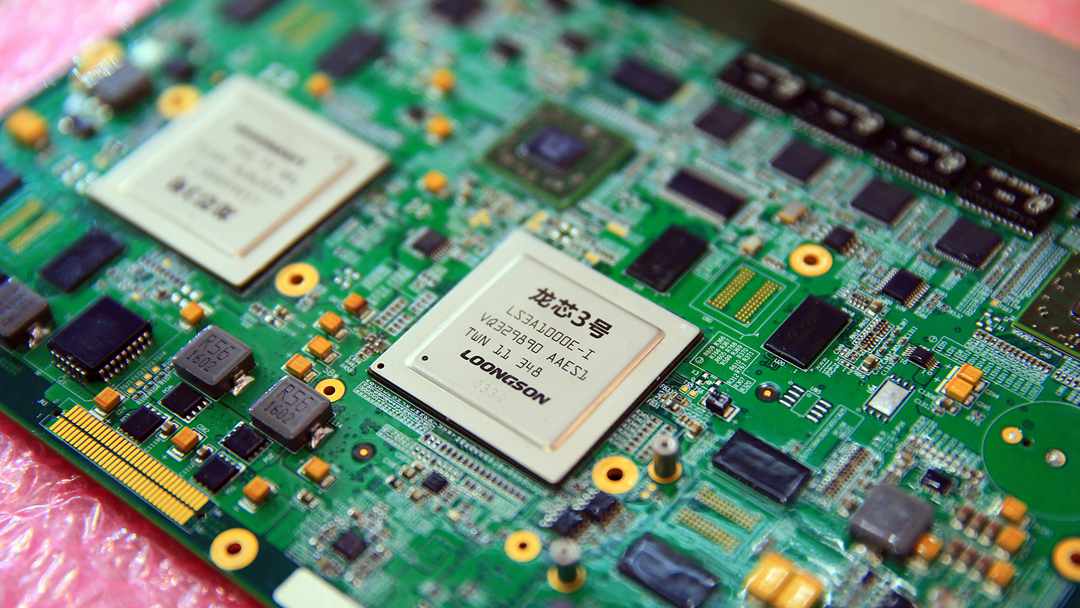Hendrik_2000
Lieutenant General
Some more news on Loongson ISA. slowly China developed their own Proprietary instruction set
'Historic breakthrough': Chinese company unveils self-developed CPU architecture
CGTN
Share

File photo of a Loongson chip. /CFP
Loongson Technology, a leading Chinese chip company based in Beijing, unveiled on Thursday its fully self-developed CPU (central processing unit) architecture that uses an original instruction set, which has been hailed as a "historic breakthrough" by industry insiders.
The new infrastructure is named "LoongArch", short for "Loongson Architecture". It has passed the assessment of a leading third-party intellectual property evaluating agency, the company said.
An instruction set architecture (ISA) is the interface between computer hardware and software. It's the underlying architecture that supports the running of an operating system and a whole software ecosystem.
For example, the Windows operating system (OS) runs on U.S. company Intel Corporation's X86 architecture, and the Android mobile OS runs on ARM architecture developed by UK-based chip designer ARM Holdings.
The two best-known ISAs have been dominating on computers and smartphones worldwide since 2010, and both have very large industrial ecosystems including hardware like chips and software such as various applications.
Foreign CPU manufacturers have been using their ISAs as a tool to control the ecosystems and exclude competitors. Other companies have to pay royalties to get the licenses to develop CPUs compatible with them. If Chinese companies rely on those foreign ISAs, it's not possible for them to build an independent industrial ecosystem, according to the company.
"If we compare chip designing to writing articles, an ISA is like the language we use. Chinese people can write an article in English, but can never develop our national culture based on English," Hu Weiwu, chairman and chief scientist of Loongson, was quoted as saying by the Beijing Daily. He's also the chief engineer of the Institute of Computing Technology under the Chinese Academy of Sciences (CAS).
The "LoongArch", which is an outcome of the company's 20 years of hard work and experience in CPU development and ecosystem building, has nearly 2,000 proprietary instructions, the company said.
It's also compatible with other mainstream ISAs, allowing the efficient operation of complicated programs written for other architectures.
So far, Loongson's CPU chip based on the new architecture, named "3A5000", has been taped out and is under internal test. Its processing performance is very close to that of mainstream products on the market, Hu said. A complete OS based on the "LoongArch" has also run stably on computers using the chip.
"Only with our proprietary ISA can we build a new pattern in the information technology industry and form our own industrial chain," Hu told the Science and Technology Daily.
Loongson Technology was jointly funded and set up in 2010 by the Beijing municipal government and the CAS, with the goal of industrializing the technological achievements of the CAS in chip research and development.
'Historic breakthrough': Chinese company unveils self-developed CPU architecture
CGTN
Share

File photo of a Loongson chip. /CFP
Loongson Technology, a leading Chinese chip company based in Beijing, unveiled on Thursday its fully self-developed CPU (central processing unit) architecture that uses an original instruction set, which has been hailed as a "historic breakthrough" by industry insiders.
The new infrastructure is named "LoongArch", short for "Loongson Architecture". It has passed the assessment of a leading third-party intellectual property evaluating agency, the company said.
An instruction set architecture (ISA) is the interface between computer hardware and software. It's the underlying architecture that supports the running of an operating system and a whole software ecosystem.
For example, the Windows operating system (OS) runs on U.S. company Intel Corporation's X86 architecture, and the Android mobile OS runs on ARM architecture developed by UK-based chip designer ARM Holdings.
The two best-known ISAs have been dominating on computers and smartphones worldwide since 2010, and both have very large industrial ecosystems including hardware like chips and software such as various applications.
Foreign CPU manufacturers have been using their ISAs as a tool to control the ecosystems and exclude competitors. Other companies have to pay royalties to get the licenses to develop CPUs compatible with them. If Chinese companies rely on those foreign ISAs, it's not possible for them to build an independent industrial ecosystem, according to the company.
"If we compare chip designing to writing articles, an ISA is like the language we use. Chinese people can write an article in English, but can never develop our national culture based on English," Hu Weiwu, chairman and chief scientist of Loongson, was quoted as saying by the Beijing Daily. He's also the chief engineer of the Institute of Computing Technology under the Chinese Academy of Sciences (CAS).
The "LoongArch", which is an outcome of the company's 20 years of hard work and experience in CPU development and ecosystem building, has nearly 2,000 proprietary instructions, the company said.
It's also compatible with other mainstream ISAs, allowing the efficient operation of complicated programs written for other architectures.
So far, Loongson's CPU chip based on the new architecture, named "3A5000", has been taped out and is under internal test. Its processing performance is very close to that of mainstream products on the market, Hu said. A complete OS based on the "LoongArch" has also run stably on computers using the chip.
"Only with our proprietary ISA can we build a new pattern in the information technology industry and form our own industrial chain," Hu told the Science and Technology Daily.
Loongson Technology was jointly funded and set up in 2010 by the Beijing municipal government and the CAS, with the goal of industrializing the technological achievements of the CAS in chip research and development.
